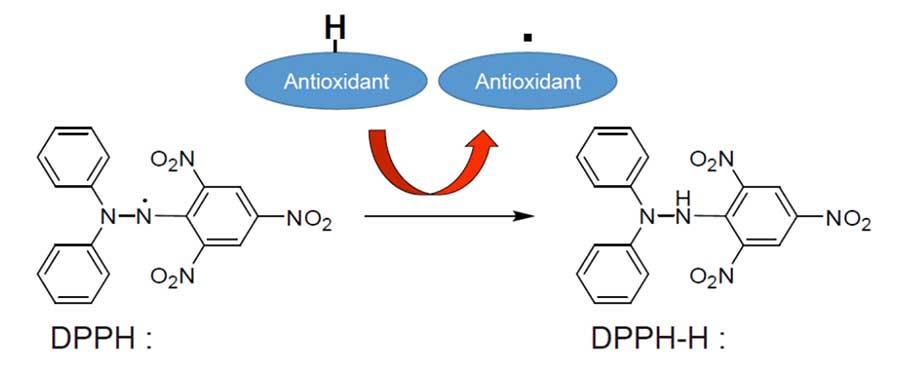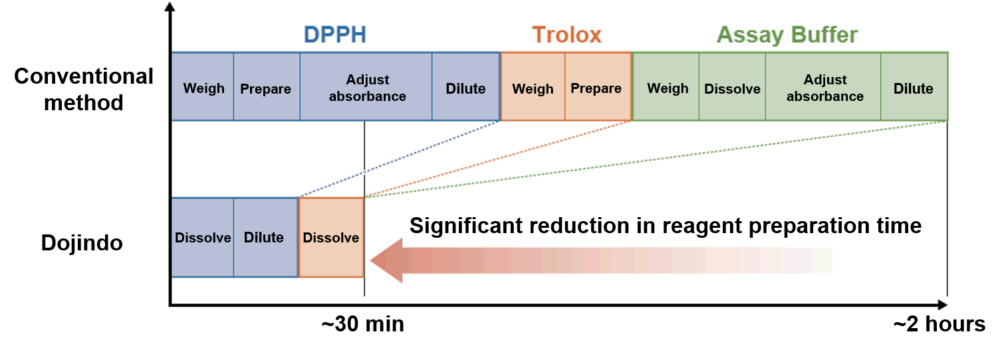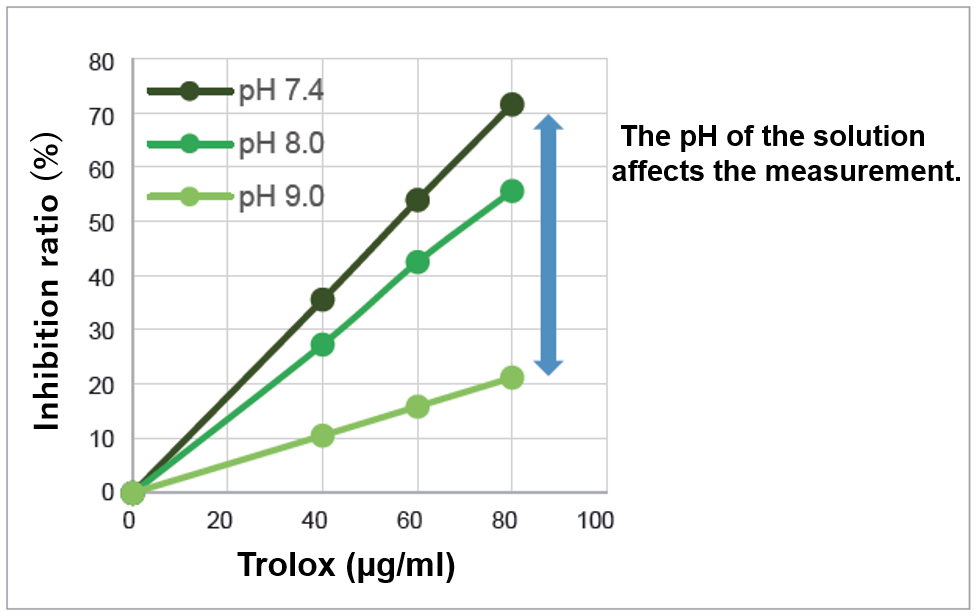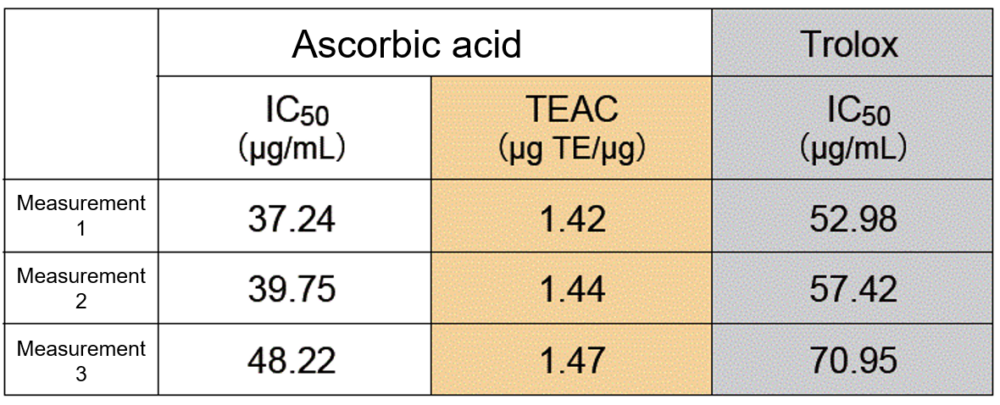DPPH Antioxidant Assay Kit

DPPH Antioxidant Assay Kit
Changes in antioxidant capacity of the body are involved in the development of various diseases and health problems. As a result, this increases expectations for foods with antioxidant activity (antioxidant foods). Kochi University’s Shimamura et al. have developed a method using DPPH (2,2-Diphenyl-1-picrylhydrazyl) for evaluating antioxidant activity with little difference between measurement facilities1). This product uses a method including a microplate based on the report of Shimamura et al. By manualizing the DPPH measurement method and producing a kit of stable and constant quality, we were able to reduce data variability and complexity of reagent preparation, which has experienced issues until now.
Product information
Antioxidant Capacity Measurement Kit
1) T. Shimamura et al., Anal. Sci., 2014, 30, 717 – 721

Technical info
DPPH and Trolox are unstable in solution. Please prepare immediately before using.
DPPH content needs to be checked by measuring absorbance.
Reagents necessary for measurement are inlcuded and subdivided. Begin experiments immediately with simple preparation before measurement.
(Please use sonication to dissolve the DPPH Reagent.)

Measuring method
After preparing the reagent, add the reagent and sample to the 96-well microplate and react for 30 minutes.

Comparison with a conventional method
When measuring antioxidant activity with DPPH, the pH and solvent concentration in the solution affect the measurement. This product uses protocols and analysis methods to minimize these effects.
Effect of pH

The assay buffer provided with the product allows measurement at a certain pH.
Effect of sample solvent

The sample volume is set to 1/10 (20 μL) of the total reaction solution. The kit is optimized so that there is no difference in the measured value even if the sample is dissolved in water or ethanol.
IC50 Value Variation

If the antioxidant capacity of a sample is analyzed using only IC50 values, the data will vary slightly in the different measurement conditions. By measuring the sample and standard substance (Trolox) simultaneously and calculating the antioxidant capacity as the Trolox equivalent activity value (TEAC), highly reproducible measurement values can be obtained.
TEAC (μg TE/μg) = Trolox IC50 (μg/mL)/ Sample IC50 (μg/mL)”
Measurement Example
Confirming differences between facilities
At three facilities, antioxidants were measured by the DPPH method.
Gallic acid, catechin, and morin (known antioxidants) were measured with a spectrophotometer using a cuvette and calculated as a Trolox equivalent activity value (TEAC).

There was nearly no difference in measured values between three facilities.
Reference: T. Shimamura et al., NipponShokuhin Kagaku Kogaku Kaishi, 2007, 54, 482 – 487.
Comparison between microplate and cuvette

Similar to the above experiment, three antioxidants were measured using a microplate and calculated as Trolox equivalent activity values. As a result, almost the same measurement results were obtained. This kit uses a microplate for measurement.